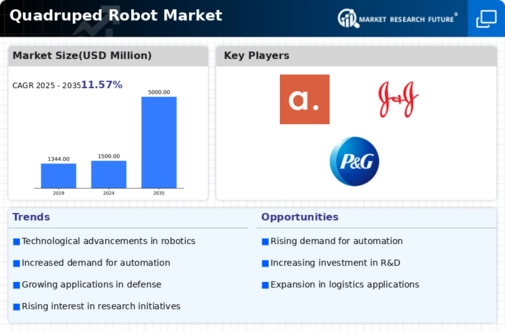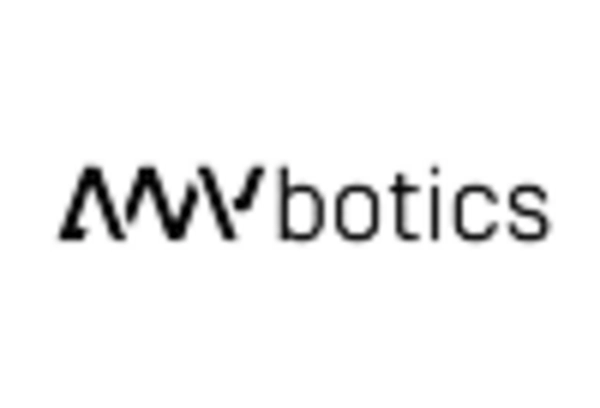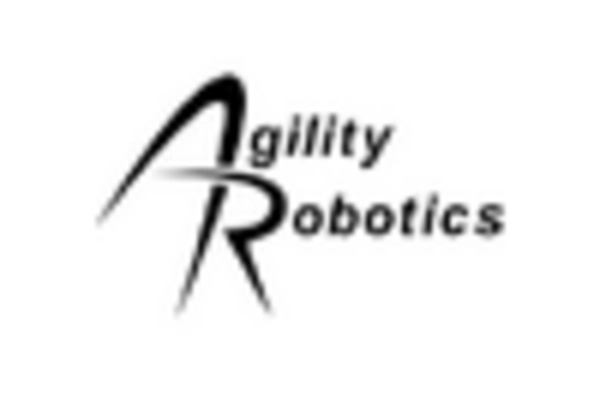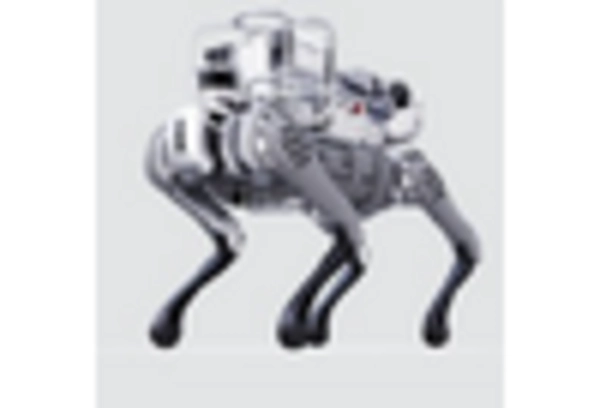Diverse Application Areas
The versatility of quadruped robots is a significant driver for the Quadruped Robot Market. These robots are increasingly being utilized in a wide range of applications, from search and rescue operations to agricultural monitoring and surveillance. Their ability to traverse challenging terrains makes them particularly valuable in environments where traditional wheeled robots may struggle. Market analysis indicates that sectors such as agriculture and defense are expected to contribute significantly to the growth of the quadruped robot market, with projected revenues reaching several billion dollars by 2027. This diversity in application not only enhances the market's resilience but also encourages further innovation and development within the Quadruped Robot Market.
Increased Investment in R&D
Investment in research and development is a critical driver for the Quadruped Robot Market. Companies and governments are allocating substantial resources to explore innovative designs and functionalities of quadruped robots. This influx of funding is not only enhancing the performance of existing models but also paving the way for the development of next-generation robots. For example, recent reports indicate that R&D spending in the robotics sector has surged, with estimates suggesting a growth rate of approximately 15 percent annually. Such investments are likely to lead to breakthroughs in mobility, energy efficiency, and adaptability, thereby expanding the potential applications of quadruped robots across various sectors, including logistics, military, and healthcare.
Growing Demand for Automation
The rising demand for automation across various industries is propelling the Quadruped Robot Market forward. As businesses seek to improve efficiency and reduce operational costs, the adoption of robotic solutions is becoming increasingly prevalent. Quadruped robots, with their unique capabilities, are well-suited for tasks that require mobility and adaptability. Industries such as construction, logistics, and agriculture are particularly keen on integrating these robots into their operations. Recent statistics suggest that the automation market is expected to grow significantly, with quadruped robots playing a pivotal role in this transformation. This trend indicates a promising future for the Quadruped Robot Market, as more organizations recognize the benefits of robotic automation.
Enhanced Safety and Risk Mitigation
Safety concerns in various industries are driving the adoption of quadruped robots, thereby influencing the Quadruped Robot Market. These robots can be deployed in hazardous environments, reducing the risk to human workers. For instance, in construction and mining, quadruped robots can perform inspections and transport materials in areas that may pose safety risks. The ability to operate in dangerous conditions not only protects human life but also enhances operational efficiency. Market data suggests that the demand for safety-enhancing technologies is on the rise, with quadruped robots being a key component of this trend. As industries prioritize safety and risk mitigation, the Quadruped Robot Market is likely to see sustained growth.
Technological Advancements in Robotics
The Quadruped Robot Market is experiencing rapid technological advancements that enhance the capabilities and functionalities of these robots. Innovations in artificial intelligence, machine learning, and sensor technologies are enabling quadruped robots to navigate complex terrains and perform tasks with greater efficiency. For instance, the integration of advanced perception systems allows these robots to operate autonomously in various environments, from disaster zones to agricultural fields. According to recent data, the market for robotic systems is projected to grow at a compound annual growth rate of over 20 percent, indicating a robust demand for sophisticated quadruped robots. This trend suggests that as technology continues to evolve, the Quadruped Robot Market will likely expand, attracting investments and fostering new applications.
















Leave a Comment